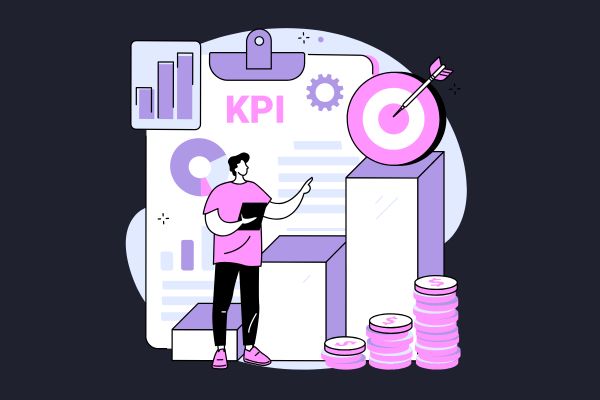Last Updated on May 15, 2025 by Becky Halls
If you’ve ever searched for search engine optimization help and immediately felt overwhelmed, you’re not alone. With algorithm updates, evolving best practices, and an internet full of conflicting advice, SEO can feel like an unsolvable puzzle.
But here’s the good news: you don’t need to be an expert to understand—and implement—effective SEO strategies. Whether you’re a small business owner, a content creator, or just someone who wants their website to actually show up in search results, this guide will break down everything you need to know.
We’ll cover the basics, tackle the common misunderstandings, and walk you through what works in 2025 so you can build a strategy that drives real results.
What Is SEO (Search Engine Optimization)?
SEO, or search engine optimization, is the process of improving your website so it ranks higher in search engine results pages (SERPs). The better your SEO, the more visibility you have—and the more likely people are to find and click on your site.
At its core, SEO is about:
- Making your content easy to find and understand (for search engines and people)
- Matching what users are actually searching for
- Building trust and authority in your niche
When done well, SEO can help you:
- Drive targeted organic traffic to your website
- Increase brand visibility and trust
- Reduce reliance on paid ads
The 3 Pillars of SEO
Before diving into tactics, it helps to understand the three main pillars of SEO. Most search engine optimization help will touch on these:
1. On-Page SEO
This includes everything you can optimize on your site:
- Keyword research and usage
- Title tags and meta descriptions
- Header tags (H1, H2, etc.)
- Image alt text
- Internal linking
2. Off-Page SEO
This refers to actions taken outside of your site to improve your rankings:
- Building high-quality backlinks
- Guest posting
- Social media signals
- Mentions and citations
3. Technical SEO
The behind-the-scenes stuff that makes your site work well:
- Mobile responsiveness
- Fast load times
- Secure connections (HTTPS)
- Structured data and crawlability
Together, these form the foundation of any solid SEO strategy.
Where People Get SEO Wrong (And What to Do Instead)
Now let’s dig into some common pain points that usually send people searching for search engine optimization help… and how to fix them.
❌ Misunderstanding Keywords
Many beginners think SEO is just about cramming keywords into content. In reality, it’s about understanding search intent and using keywords naturally within helpful, relevant content.
Tip: Use long-tail keywords (e.g., “best running shoes for flat feet”) for easier wins and more targeted traffic.
❌ Ignoring Page Speed
A slow site will hurt your rankings, and annoy your visitors.
Tip: Use tools like Google PageSpeed Insights or GTmetrix to identify speed issues and fix them. Compress images, minimize code, and use a good hosting provider.
❌ Skipping Technical Fixes
A beautiful blog post won’t rank if your site is full of broken links, crawl errors, or missing tags.
Tip: Run regular site audits using tools like Ahrefs, SEMrush, or Screaming Frog.
❌ Forgetting About Mobile
Over 60% of searches happen on mobile. If your site isn’t optimized for phones and tablets, you’re missing out.
Tip: Use a responsive design and test your site on multiple devices. Google Chrome’s Mobile-Friendly Test is a good starting point.
❌ Creating Content Without a Strategy
Writing random blog posts without a plan might feel productive, but it won’t help you rank.
Tip: Create a content calendar based on keyword research and user intent. Focus on topics your audience is actually searching for.
Practical SEO Help: What You Can Do Today
If you’re just starting out, don’t worry about doing everything at once. Start with these simple steps to begin optimizing your site and content.
Step 1: Do Smart Keyword Research
Use free tools like:
- Google’s Keyword Planner
- Ubersuggest
- AnswerThePublic
Look for keywords with reasonable search volume and low competition. Think about what your audience is really asking.
Step 2: Optimize One Page at a Time
Pick a page or blog post and make it shine:
- Add your target keyword in the title and headings
- Write a compelling meta description
- Use internal links to and from other related pages
- Add a clear call-to-action (CTA)
Step 3: Improve Your Site’s Load Time
Compress large images. Clean up unnecessary plugins (if using WordPress). Switch to faster hosting if needed.
Step 4: Set Up Google Search Console and Google Analytics
These free tools show how people are finding and using your site. Use them to track keyword performance, fix errors, and learn what content resonates.
Advanced Tactics for Sustainable SEO Growth
Once you’ve nailed the basics, here are some advanced tactics that can make a big difference.
Build Backlinks the Right Way
Backlinks remain one of Google’s top ranking factors. But it’s not about getting more – it’s about getting the right ones.
Tactics to try:
- Write guest posts for niche-relevant blogs
- Create link-worthy resources (e.g., data studies, infographics)
- Join backlink exchange platforms like 3Way.Social
Focus on Content Experience (Not Just Content Length)
Google now evaluates how satisfying your content is – not just how long it is.
Make your content more engaging by:
- Using visuals, charts, and videos
- Breaking up text with headers and bullet points
- Answering questions clearly and quickly
Embrace SXO (Search Experience Optimization)
SEO and UX are no longer separate. SXO combines both to deliver a better experience and better rankings.
Start by:
- Improving navigation
- Reducing bounce rates
- Making key content easy to find and understand
Real-World Example: SEO Help That Delivered Results
A mid-sized B2B software company came looking for search engine optimization help after a major traffic drop. Their issue? They were ranking for keywords that no longer matched their user intent.
We:
- Conducted fresh keyword research
- Updated old content to match new search behavior
- Built backlinks through industry-specific guest posts
The result? A 60% increase in organic traffic over 4 months, and more leads from qualified visitors.
FAQs: Search Engine Optimization Help
“How long does SEO take to work?”
SEO is a long game. You might see some improvements in 4–6 weeks, but significant results often take 3–6 months or more.
“Is SEO still worth it in 2025?”
Absolutely. With AI-generated content flooding the web, quality SEO backed by human expertise and trust is more important than ever.
“Do I need to hire an SEO agency?”
Not necessarily. You can make huge improvements on your own with the right tools and strategies—but an expert can help you scale faster.
Final Thoughts: Don’t Just Rank, Resonate
When people search online, they’re not looking for algorithms – they’re looking for answers. That’s what search engine optimization help is really about: creating content and experiences that meet those needs.
If you stay focused on your users, follow proven strategies, and stay up to date with what’s working, you don’t need to fear SEO.
You’ve got this.
And if you need a little extra support? That’s exactly what guides like this, and platforms like 3Way.Social, are here for.





